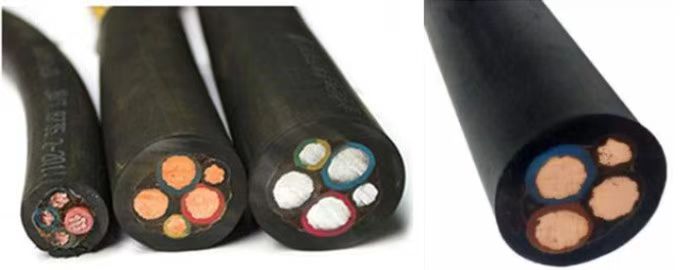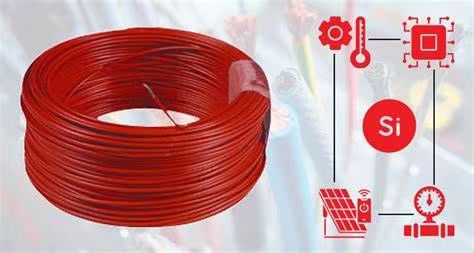When Was Rubber Cable Used?
 Oct 15,2024
Oct 15,2024

 Suke
Suke
Rubber has superior elasticity over a wide range of temperatures, as well as good tensile strength, electrical insulation, etc., and is an important material for the manufacture of a wide variety of wires, cables, and sheaths. There is no doubt that the rubber cable has become widely used as a result. Rubber as raw material, adding a variety of matching agents made of rubber material, can be adapted to different rubber cables. In rubber-insulated cables, the common materials are natural rubber (NR), Styrene-Butadiene Rubber (SBR), and Ethylene Propylene Rubber (EPR).

Natural rubber in the cable industry is mainly used as wire and cable insulation and sheath, with long-term use temperature of 60 ~ 65 ℃, and the highest voltage level up to 6KV. For the manufacture of softness, bending, and elasticity requirements of high wire and cable, such as rubber cables, elevator cables, etc., natural rubber is particularly suitable. However, it cannot be used in direct contact with minerals and organic solvents and is not suitable for outdoor use. In the wire and cable industry, SBR is mostly used with NR, especially when used as wire insulation, NR can make up for the lack of tensile strength of SBR. For NR, the use of SBR can improve the thermal aging performance of the insulation layer, and improve the rubber compression before vulcanization. SBR and NR can be used together as insulation and sheathing without the requirement of oil resistance and high tear resistance. Due to its excellent comprehensive performance, EPR is widely used in the cable industry. EPR is a heat-resistant 90 ℃ insulation material and good high-voltage insulation rubber, made of 35 ~ 275KV medium-voltage, high-voltage power cables, motor lead wires, and marine cables. EPR cable in addition to excellent performance, but also the manufacturing process is simple and inexpensive, so EPR is known as inexpensive rubber.
When the outer sheath of the rubber cable is rubber, it is characterized as soft, lightweight, easy to process; waterproof, and good chemical resistance. To increase the strength of the sheath, often in the rubber-plastic sheath to join the metal armor. Metal armor is divided into steel-tape armor and steel wire armor, steel-tape armored cable can withstand a certain radial pressure, for buried environments. Steel wire armored cable can withstand a certain axial tension, used for shaft laying, as well as the seabed, river bottom laying.

Different rubber cables can be used in different voltage ranges. Rubber-insulated power cables are the earliest power cables in history. Because of its flexibility, it is suitable for installation in a small bending radius or the need to regularly change the laying position of the occasion, mostly used for connecting the line between the equipment. Rubber insulation is mainly EPR insulation, used for 35KV and the following voltage levels; there is also the use of natural SBR insulation, the applicable level in the 6KV below. Due to excellent electrical properties, anti-aging and water resistance are very good, EPR insulation has been applied to 110KV voltage level.

 Home
Home What Need To Notice In The Cables’ Transportation Process?
What Need To Notice In The Cables’ Transportation Process?  You May Also Like
You May Also Like

 Tel
Tel
 Email
Email
 Address
Address














